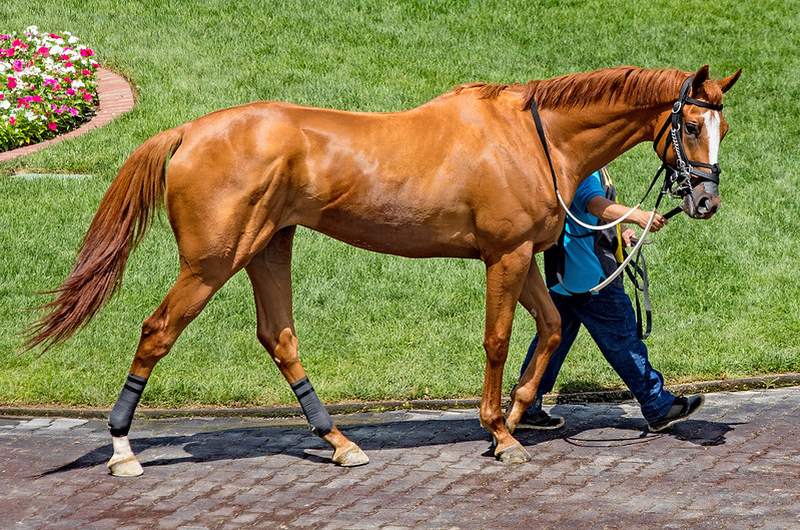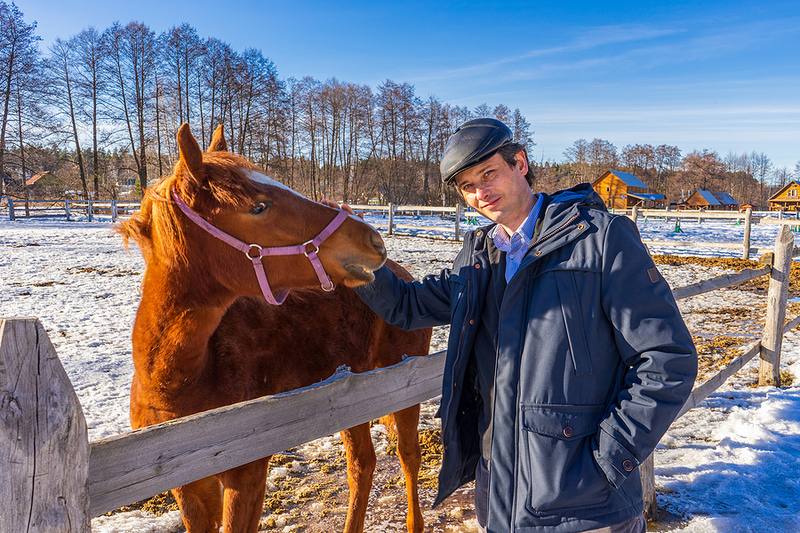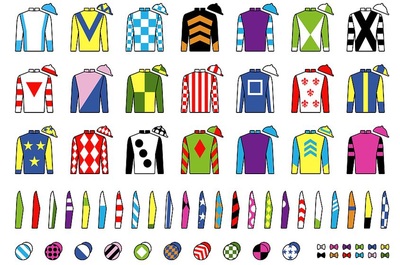 Unlike many other sports, horseracing offers fans the chance to really become a part of the action. For whilst it is beyond the scope of all bar the mega-rich to own a football club or an F1 team, for example, owning a racehorse – or at least a small share in one – is a far more realistic goal for many, with a whole range of ownership options available.
Unlike many other sports, horseracing offers fans the chance to really become a part of the action. For whilst it is beyond the scope of all bar the mega-rich to own a football club or an F1 team, for example, owning a racehorse – or at least a small share in one – is a far more realistic goal for many, with a whole range of ownership options available.
So how do you go about owning a racehorse and entering it into a race? Can anyone simply turn up with their trusty nag, pay the race entry fee and take their place in the stands for what is sure to be a moment of glory?
Unfortunately, it isn’t quite as simple as that, although not so complicated as many imagine, and it is certainly not anything like the high society closed shop that may have been true in years gone by.
In this article we take a look at the rules surrounding racehorse ownership, beginning with the horses themselves, moving on to who is eligible to become an owner and the various options available, plus any regulations which must be met.
Not Just Any Old Horse

The first thing for any prospective racehorse owner to be sure of is that they have the right type of horse to race. And in the world of professional flat racing, this means they must be a thoroughbred – a breed specifically bred for racing and harking back to the 17th century. The rules on National Hunt horses are slightly more relaxed – although the majority are still thoroughbreds. Regardless of the code, whether flat or jumps, all runners must be the product of horses contained within a recognised stud book – essentially a catalogue of stallions and mares eligible to produce racehorses.
As romantic a notion as it would be to enter your particularly speedy Shetland Pony for the next major event of the season, in reality all horses must conform to the following criteria in order to be eligible to race in a professional contest on British or Irish shores.
- Must be by a dam and sire who are studbook-approved individuals.
- Have been naturally conceived and birthed.
- Must be accepted for inclusion in the studbook themselves.
- Identity must be verified and have been implanted with an identifying microchip.
All horses purchased at the multitude of racing sales held around the country each year will come with paperwork confirming adherence to all of the above, a statement which is true no matter what the age of the horse, from the foals and all the way up to the older existing racehorses. Owners purchasing privately should always ensure that the horse comes with the relevant documentation.
Who Can Be An Owner?

So that’s the type of horse required, but just what type of individuals are permitted to be an owner?
And the answer to that question is: just about anyone really. The 14,000+ registered owners in Great Britain covering the full gamut of society, ranging from your regular man in the street all the way up to royalty, both from Britain and overseas.
Of course, the British Horseracing Authority (BHA) does still have a responsibility in policing the area of ownership, ensuring that only responsible owners are permitted, whilst keeping potentially unscrupulous individuals out. As such, in order for a horse to race, the details of the owner or owners must first be accepted, verified and registered by the BHA.
Anyone over the age of 16 may apply – although 16 and 17 year olds will need an existing racehorse owner to act as a guarantor. All applicants will then be subjected to identity and monetary checks – much along the lines of those undertaken prior to any deal likely to require a financial commitment. Provided there are no hiccups, this tends to be a relatively quick process, with many new owners being welcomed into the sport within two working days of submitting their application.
Whilst the window concerning those eligible to apply is fairly wide, not all applications will be granted, and the final decision always lies with the BHA. Reasons an application may ultimately be refused include the following:
- If anyone associated with the application is a disqualified person – usually meaning an individual who has previously been found to have behaved in a manner detrimental to the sport of racing.
- Should anyone associated with the application be subject to any form of insolvency proceedings.
- A failure to demonstrate that appropriate financial arrangements are in place – essentially an affordability check.
- The withholding of any requested information.
- Should anyone associated with the application be deemed to be inappropriate. This is slightly vague, but it is likely a catchall to keep out unsavoury characters – individuals who perhaps have not previously acted in a way detrimental to racing, but may have a very questionable past in other areas.
- Professional jockeys may not own, part-own, or have any financial interest in a horse other than those gained through riding. The only exception to this is a horse which is to be used solely in hunter chase or military races. Note however that amateur jockeys are permitted to own horses, with many in fact opting to ride their own horses during their careers.
Should an individual subsequently fall into any of the above categories, having initially passed the eligibility check, the BHA is within its rights to revoke the right to act as an owner within the sport.
Types of Ownership
 Whilst to an extent owning a racehorse is open to all who are able to pass the eligibility test, there is no getting away from the fact that it is a relatively expensive endeavour – certainly in comparison to purchasing a new kitten or puppy for example, with both the initial purchase and upkeep being beyond the scope of many individuals. The good thing with racehorse ownership though is that there is no stipulation stating that it must be done on an individual basis, with a range of options enabling prospective owners to share the cost.
Whilst to an extent owning a racehorse is open to all who are able to pass the eligibility test, there is no getting away from the fact that it is a relatively expensive endeavour – certainly in comparison to purchasing a new kitten or puppy for example, with both the initial purchase and upkeep being beyond the scope of many individuals. The good thing with racehorse ownership though is that there is no stipulation stating that it must be done on an individual basis, with a range of options enabling prospective owners to share the cost.
All told, there are five main types of ownership available:
- Sole Owner – A single individual owning or leasing a horse outright.
- Company – Owning or leasing a horse under the name of a company or business. A named individual must be registered in order to act on behalf of the company.
- Partnership – Two or more people who share a lease or ownership. All members of the partnership must be registered as owners.
- Syndicate – An option whereby the cost of ownership is spread amongst the members of a syndicate – with numbers for the larger syndicates sometimes running into the hundreds. The syndicate will be run by an individual known as the “syndicator” who will be responsible for all management and administration. The syndicator must be officially registered as an owner, but the individual members of the syndicate do not need to be.
- Racing Club – With a racing club, the ownership of the horse remains in the hands of the club itself, with members paying a subscription in order to benefit from some of the perks of ownership, but never actually owning any part of the horse or horses. The Racing Club Manager must be registered as an owner, but the members of the club do not need to be.
Racehorse Ownership: Final Steps
 Having registered as an owner, either individually or via any of the other routes outlined above, and of course having ensured that you have purchased a horse eligible to race on these shores, there are two final steps that need to be taken.
Having registered as an owner, either individually or via any of the other routes outlined above, and of course having ensured that you have purchased a horse eligible to race on these shores, there are two final steps that need to be taken.
Firstly, your horse will need to be named, and secondly, they are going to require colours – also known as silks – in which to run.
Both the name and colours will need to be acceptable to, and registered with, the BHA, before a horse will be permitted to race.
- Horse Names – All names must be unique in order to ensure runners are identifiable from one another and must contain eighteen characters or fewer. All proposed names must be submitted for approval to the BHA who will reject any name already in use, or those deemed to be lewd or offensive in nature. There have of course been many thousands of names used over the years, but the BHA’s handy availability checker
enables owners to ascertain whether a name has already been taken. - Racing Colours – Much like a horse’s name, an owners colours must be unique to that owner. Prior to entering a horse to run in any race, owners must submit, receive approval for and register their “Racing Colours” with the BHA. A wide range of colours and patterns are available to choose from, with the BHA’s silks design feature enabling new owners to play around with the design options.
So can anyone enter a horse in a race?
Yes, they can… so long as they pass the BHA’s eligibility checks, ensure they own the right type of horse and follow all the required registration rules, including naming the horse and determining in which colours it will run in. After that, it’s time to sit back and enjoy what must be one of the most thrilling rides available to the modern sports fan.
